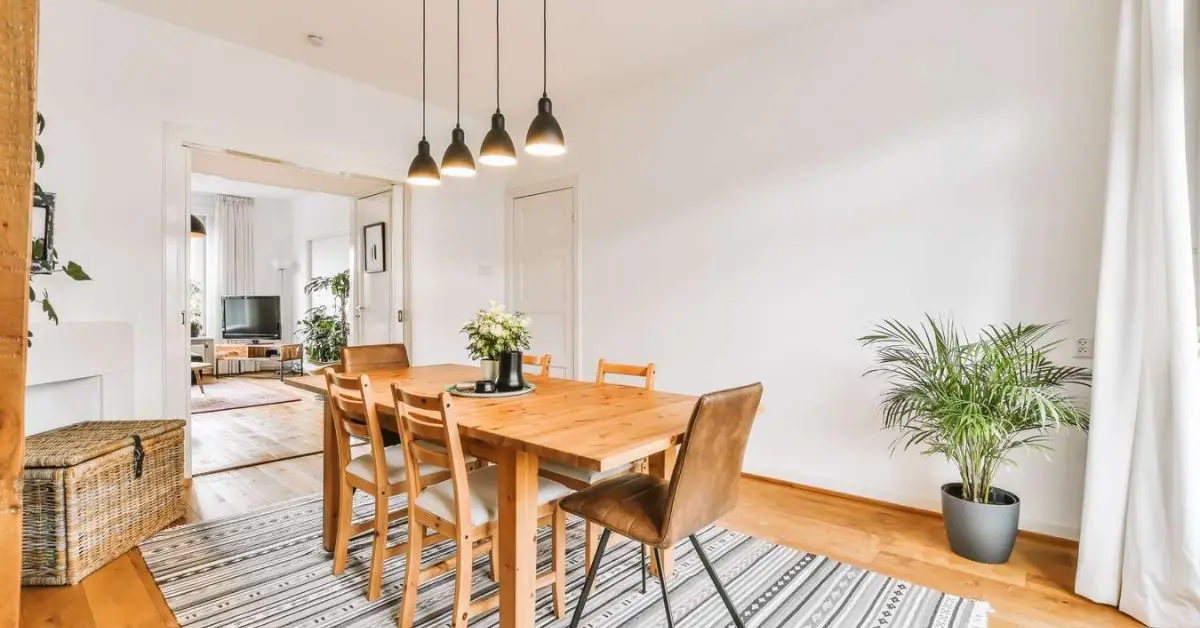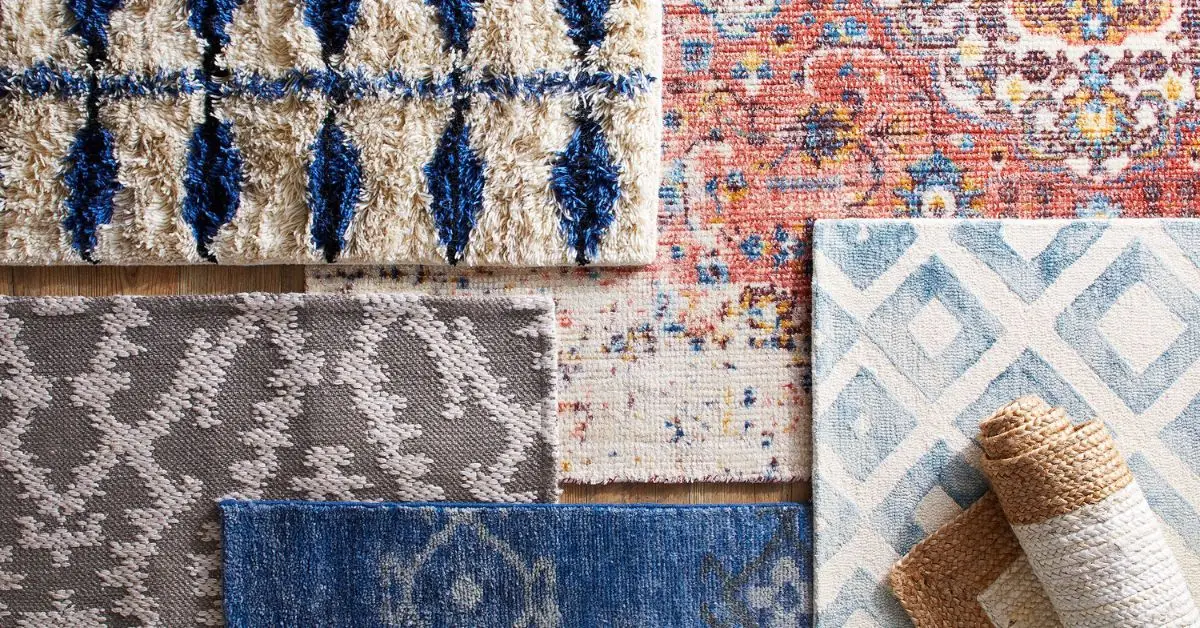5 Rug Blunders That Make Your Home Feel Cluttered
I’ve lost count of how many beautiful rooms I’ve seen look “off” because of one simple thing: the rug. The sofa is great, the lighting is fine, the paint is on point—yet the space still feels small, cheap, or unfinished.
If that sounds familiar, it’s not your taste—it’s a few rug mistakes most people don’t realise they’re making. I’ve studied what top designers recommend and what real homeowners complain about, and the same five issues show up again and again.
The good news? These are easy fixes. Think correct sizing without guesswork, smarter placement that frames your furniture, colour and pattern that add life (not noise), a pad that stops slipping and sagging, and basic care that keeps everything looking crisp.
In this guide, I’ll show you the exact tweaks that make a room feel bigger, calmer, and more polished—without replacing everything you own.
Before we dive in, tell me: what’s the one rug issue that bugs you every time you walk into your room?
Why Rugs Make or Break a Room
I used to think rugs were just decoration — something you roll out at the end, after the “real” design work is done. But the truth is, a rug is the foundation piece of any room. It decides how big or small your space feels, how your furniture connects, and even whether the room looks expensive or unfinished.
According to Architectural Digest, nearly 70% of designers consider rugs the anchor that ties a room together. And it shows in real life:
- A sofa with the wrong rug under it can look cheap, even if you spent a fortune on it.
- A dining room feels awkward and messy if the rug doesn’t match the table’s footprint.
- A bedroom can look incomplete when the rug only peeks a few inches out from under the bed.
So when you step back and feel something’s “off” in your home, don’t blame the furniture first — check the rug. So when you step back and feel something’s “off” in your home, don’t blame the furniture first — check the rug. Rugs aren’t the only way to shape how a space feels underfoot — flooring itself plays a big role. If you’re exploring eco-friendly options, consider why cork flooring is one of the best sustainable choices for homes.
Mistake #1 — Picking the Wrong Rug Size

This is the mistake I see most often, and honestly, it’s the easiest to avoid. The problem? Most people buy rugs that are too small. A rug that barely reaches under your sofa or only sits under the coffee table makes the entire space look cramped and pieced together.
Think of it this way: a rug is like the frame for your furniture. If the frame is too small, the picture feels cut off.
Here’s how to get it right:
- Go bigger than you think. A larger rug pulls the whole room together and instantly makes the space feel more polished.
- The 3-2-1 Rule:
- Sofa = at least 3 legs on the rug (front ones count).
- Chairs = at least 2 legs on the rug.
- Tables = ideally all 4 legs on the rug.
- Measure before you buy. Don’t eyeball it. Use painter’s tape to mark the rug size on the floor and see how the layout feels.
If you’re still unsure, Pinterest is full of comparison photos — the “wrong size vs. right size” visuals are game-changing. Once you see how much bigger and balanced a room feels with the correct rug, you’ll never go small again.
Mistake #2 — Ignoring Rug Placement & Orientation
Even if you nail the size, poor placement can undo everything. A rug should ground your furniture, not float in the middle of the floor. But too often, I see rooms where:
- In living rooms: the rug sits too far from the sofa and chairs, so nothing looks connected.
- In dining rooms: the rug fits the table but not the chairs, so when you pull them out, they slide halfway off.
- In bedrooms: the rug hides almost completely under the bed, with just a sliver showing at the bottom.
The fix is simple: let your rug act like the stage for your furniture. Everything — sofas, chairs, beds, and tables — should feel like they belong on it. When the rug defines the space instead of shrinking it, your room instantly feels intentional and welcoming.
Mistake #3 — Playing It Too Safe with Colour & Pattern

I get it — beige feels safe, grey feels easy, and “neutral” sounds like the smartest choice when you don’t want to make a mistake. But here’s the thing: a safe rug often makes the whole room feel flat and lifeless. It blends in so much that the furniture ends up looking like it’s floating in a dull sea of sameness.
I’ve seen this countless times in homes where everything is technically “nice,” yet the room has no energy. That’s because colour and pattern are what give a rug personality. Without them, your space risks looking like a catalogue photo instead of a lived-in home.
The truth? Bold rugs are making a huge comeback. TikTok and Instagram reels are full of before-and-after clips where one patterned rug completely changes the vibe of a room. Designers too are pushing people to stop playing it safe — a strong pattern or a deep shade is often the missing spark.
A simple way to try it:
- Pick one bold element — maybe Moroccan patterns, geometric shapes, or a deep navy/emerald shade.
- Balance it with your existing neutrals so it doesn’t overwhelm.
- Think of the rug as the “art” on your floor — a statement piece that grounds everything.
Even one bold rug can do what a dozen throw pillows never could: give your room life.
Mistake #4 — Skipping Rug Pads & Layering
This is the behind-the-scenes mistake no one talks about. A lot of people unroll a rug and leave it as is. The result? Slipping, wrinkling, and corners curling up — which not only looks cheap but is also a tripping hazard.
That’s where rug pads come in. They don’t just keep rugs in place; they also:
- Add an extra layer of comfort underfoot.
- Protect floors from scratches.
- Extend the life of your rug by reducing wear.
Another trick designers love is layering. Place a smaller, bold rug on top of a larger neutral one. It gives you texture, depth, and a chance to experiment with style without committing to a huge statement piece. Pinterest is full of these hacks, and the results are far more polished than a single rug on its own.
And if you’re still doubtful, just scroll through home décor forums. On Reddit’s r/InteriorDesign, people often share their struggles with rugs that slip, fold, or feel the wrong size — and the most common advice is simple: add a pad, or go bigger.
It’s such a small fix, but it changes everything. Sometimes the details nobody sees are what make the whole room feel put together.
Mistake #5 — Forgetting Maintenance & Cleaning

Most people spend a lot of time choosing the right rug, but then ignore what happens after it’s in the room. A dirty or unevenly worn rug can make even high-end furniture look tired.
The most common errors I notice are:
- Rugs that aren’t vacuumed often enough, leading to dust build-up.
- Never rotating rugs, which causes uneven fading and wear.
- Letting spills sit too long, turning into permanent stains.
Simple fixes make a big difference:
- Vacuum weekly to keep fibres fresh.
- Rotate every six months to balance sunlight and traffic.
- Spot clean quickly before marks set in.
Spot clean quickly before marks set in. Accidents happen — a knocked-over glass or a paint spill can ruin the look of your rug if ignored. That’s why it helps to know simple hacks to clean paint and stains from carpets and rugs quickly before they set in.
Designers often compare rugs to fabric floors — they need as much care as anything else underfoot. According to Homes247, maintenance is one of the most overlooked aspects of rug ownership, yet it’s the key to keeping your space polished.
Quick Rug Buying Checklist
Instead of leaving you with theory, here’s a short, practical list you can use anytime you shop for or rearrange a rug. It’s easy to remember and screenshot:
- Measure before you buy — don’t guess, tape the area first.
- Match rug to furniture layout — it should anchor the seating, not float.
- Add texture & personality — bold patterns or colours can transform a neutral space.
- Always use pads — they prevent slipping, add comfort, and extend the rug’s life.
- Maintain regularly — vacuum, rotate, and spot clean to keep it looking fresh.
Maintain regularly — vacuum, rotate, and spot clean to keep it looking fresh. And if your space flows between different flooring types, don’t forget the finishing touches. Adding floor transition strips with a professional finish can make the shift seamless and elevate the overall look alongside your rug.
Think of this checklist as your quick “rug survival guide.” Follow it, and your rug won’t just fill the floor — it’ll pull your whole room together.
Closing Takeaway — Small Fixes, Big Room Impact
At the end of the day, it’s rarely the sofa, the wall colour, or the light fixtures holding your room back — it’s usually the rug. The wrong size, poor placement, or dull patterns quietly undo all the effort you’ve put in. The good news? Fixing even one mistake can transform the way your entire space feels.
Remember this: your rug isn’t just underfoot — it’s under everything that defines your room.
So, look around your space today. Do you see a rug that’s too small, slipping around, or fading in spots? These aren’t small details — they’re the foundation of how your home feels.
Your turn: Which of these rug mistakes have you been guilty of? Share your experience in the comments — your story might be the exact tip someone else needs.
For more smart home fixes, décor ideas, and practical tips, explore Build Like New — where we turn everyday spaces into rooms you’ll actually love living in.
Disclaimer: The tips shared in this article are for general home décor guidance only. Always consider your room’s specific dimensions, lighting, and lifestyle needs before making changes.


